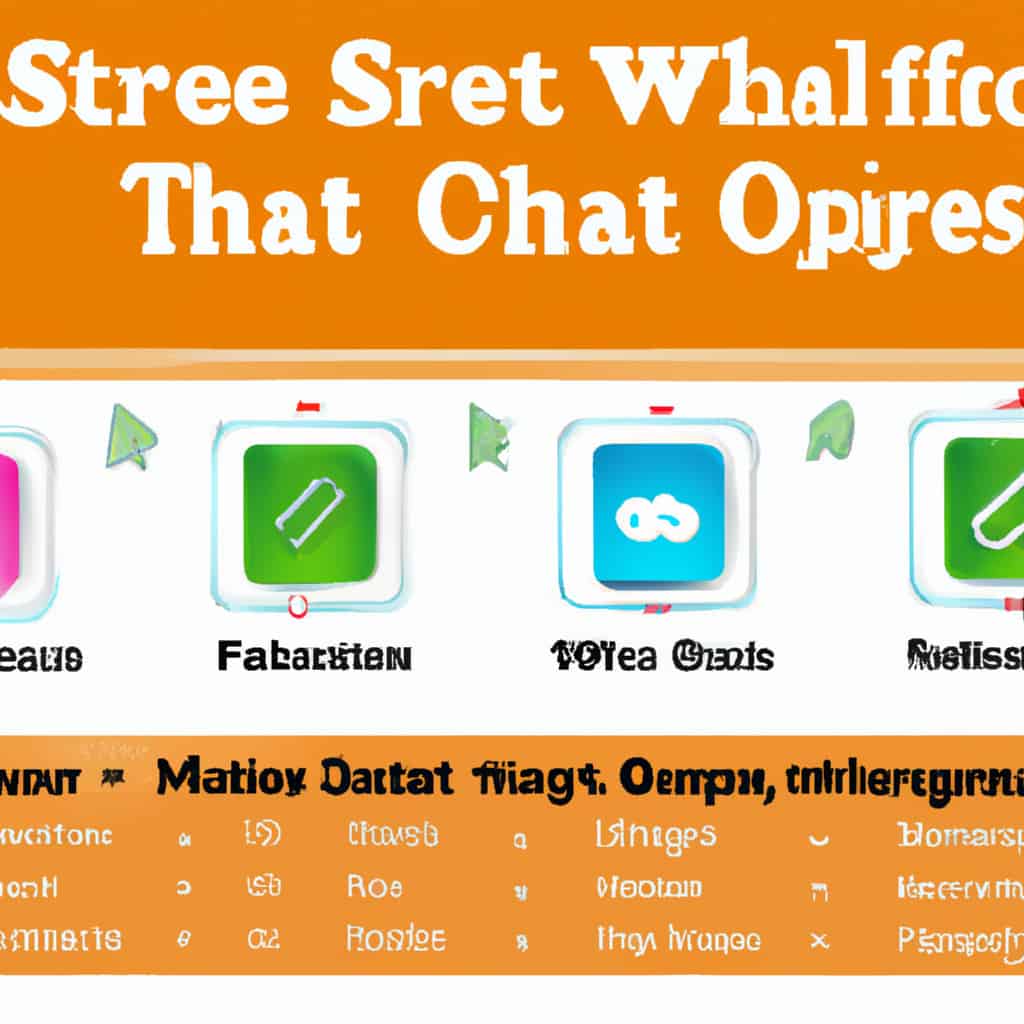The visualization of an organization’s structure and hierarchy plays a vital role in facilitating effective communication, collaboration, and decision-making.
This article presents a list of the top five org chart software solutions, which offer features such as drag-and-drop functionality, customizable chart designs, employee profiles, and integration with HR systems.
By utilizing these tools, organizations can showcase their structure, identify communication channels, and enhance understanding of roles and responsibilities.
In doing so, they can foster a sense of belonging and promote efficient functioning within the organization.
Key Takeaways
- Ease of use and user-friendly interface are important factors in selecting org chart software.
- Customization options for chart designs enhance visual appeal and clarity of org charts.
- Integration with HR systems and employee profiles allows for seamless data synchronization and efficient tracking of employee performance.
- Interactive and collaborative features are essential for effective communication and teamwork.
Ease of Use and User-Friendly Interface
The ease of use and user-friendly interface of org chart software is an important factor to consider when selecting a tool for visualizing organizational structure. A good user experience is crucial for ensuring that users can navigate the software easily and efficiently. Org chart software should provide intuitive features and a clear layout that allows users to create and modify charts with minimal effort.
Additionally, accessibility options are essential for accommodating users with different needs. These options could include the ability to adjust font sizes, colors, and contrast, as well as support for screen readers and keyboard shortcuts.
Customization Options for Chart Designs
Customization options for chart designs can enhance the visual appeal and clarity of organizational charts. By allowing users to personalize the appearance of their charts, customization features enable organizations to create visually engaging and informative representations of their structure.
Some chart design options include:
-
Color schemes: Users can choose from a range of color palettes to highlight different departments, roles, or levels in the organization.
-
Layout customization: Users can modify the layout of the chart, such as arranging boxes in a hierarchical or matrix structure, to accurately reflect the organization’s structure.
-
Font styles and sizes: Users can select fonts that align with their organization’s branding and adjust the size of the text to improve readability.
These customization features empower organizations to create charts that are not only visually appealing but also effectively communicate the hierarchy and relationships within the organization.
Integration With HR Systems and Employee Profiles
Integration with HR systems and employee profiles allows for seamless data synchronization and ensures that organizational charts reflect the most up-to-date information on employees’ roles and responsibilities. This integration enables the org chart software to pull information directly from the HR system, such as job titles, departments, and reporting relationships. By doing so, it eliminates the need for manual updates and reduces the risk of outdated or inaccurate information.
Additionally, integration with payroll systems allows for efficient tracking of employee performance and compensation. This feature enables organizations to align performance metrics with compensation data, facilitating fair and transparent reward systems. Furthermore, by tracking employee performance, organizations can identify areas for improvement, recognize high performers, and make informed decisions regarding promotions and succession planning.
Overall, the integration with HR systems and employee profiles enhances the accuracy and effectiveness of organizational charts while streamlining HR processes.
Interactive and Collaborative Features
Interactive and collaborative features are essential for effective communication, collaboration, and decision-making within an organization. These features enable employees to actively participate in discussions, share ideas, and work together in real time.
Here are three key aspects of interactive collaboration that can enhance organizational effectiveness:
-
Real-time editing: Interactive collaboration tools allow multiple users to edit and update documents simultaneously, ensuring that everyone has access to the most up-to-date information. This enables teams to work together on projects, make changes in real time, and avoid version control issues.
-
Discussion boards: These platforms provide a space for employees to ask questions, share feedback, and engage in discussions. By facilitating open communication and collaboration, discussion boards foster a sense of belonging and encourage employees to contribute their insights and perspectives.
-
Task management: Interactive collaboration tools often include features for assigning tasks, setting deadlines, and tracking progress. This helps keep everyone on the same page, ensures accountability, and promotes efficient collaboration towards achieving organizational goals.
Clear Visualization and Communication of Organizational Structure
One effective strategy for clear visualization and communication of the organizational structure is to utilize visual aids such as organizational charts. These charts provide a comprehensive overview of roles, responsibilities, and reporting relationships within the organization.
By using organizational charts, companies can improve employee engagement and optimize decision-making processes. Clear visualization of the organizational structure allows employees to understand their roles and responsibilities more effectively. This understanding can lead to increased engagement as employees feel a sense of belonging and purpose within the organization.
Furthermore, organizational charts enable employees to identify communication channels and reporting lines, facilitating better collaboration and coordination. Additionally, these visual aids help in optimizing decision-making processes by providing a clear representation of the hierarchy and the flow of information within the organization.
Overall, utilizing visual aids such as organizational charts can greatly contribute to improving employee engagement and optimizing decision-making processes within an organization.
Conclusion
In conclusion, visualizing the structure and hierarchy of an organization is crucial for effective communication and decision-making.
The 5 best org chart software solutions mentioned in this article provide an easy-to-use interface, customizable chart designs, integration with HR systems, and interactive features.
By using these tools, organizations can showcase their structure, identify communication channels, and enhance the understanding of roles and responsibilities.
With these software options, visualizing your organizational structure becomes as smooth as a well-oiled machine, allowing for seamless collaboration and improved productivity.
